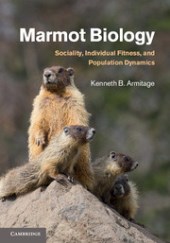Marmot Biology: Sociality, Individual Fitness and Population Dynamics
 Kenneth B Armitage
Kenneth B Armitage
Cambridge University Press, £76.20
Most people's familiarity with marmots is confined to an awareness of the groundhog or woodchuck. There are, in fact, 14 species and they are the largest representatives of the squirrel family.
Holarctic in distribution, marmots occupy inhospitable winter terrain and mountains over 3,000m. Historically, their abundance supported several predators and they were also hunted for fur and food. Indeed, the Tarbagan marmot remains a popular source of food in Asia.
Marmots present an interesting spectrum of sociality, with families focused on mothers and daughters or sister groupings, which are termed matrilines.
Their social hierarchies and winter hibernation sets them apart from most other squirrels, although they are only facultatively social – with an annual active season barely exceeding four months, by which time they need to be sufficiently fattened to survive winter.
They are vegetarian, physiologically hardened equivalents of meerkats. Within their burrows during hibernation, the body temperatures of marmots approach freezing.
Survival and sociality in relation to physiology, habitat, climate and predation offer several avenues for exploration, such as cycles of growth and individual versus group reproduction interrupted by months of precarious slumber.
Here, Armitage, the book's nonagenarian author, presents a lifetime thesis (22 chapters in six parts) incorporating 40 years of fieldwork, highlighting the yellow-bellied marmot as a representative example among the better-studied species from North America to Russia.
This primarily reference work is adequately illustrated with several tabulated data sets: facts abound at the expense of narrative.
Unlike rats, marmots get relatively little coverage as potential plague carriers. Neither are marmots adequately treated compared with other squirrels, with the exception of prairie dogs. This work may represent the comprehensive monograph in English on marmot life histories, with copious referencing, and should furnish further research.


